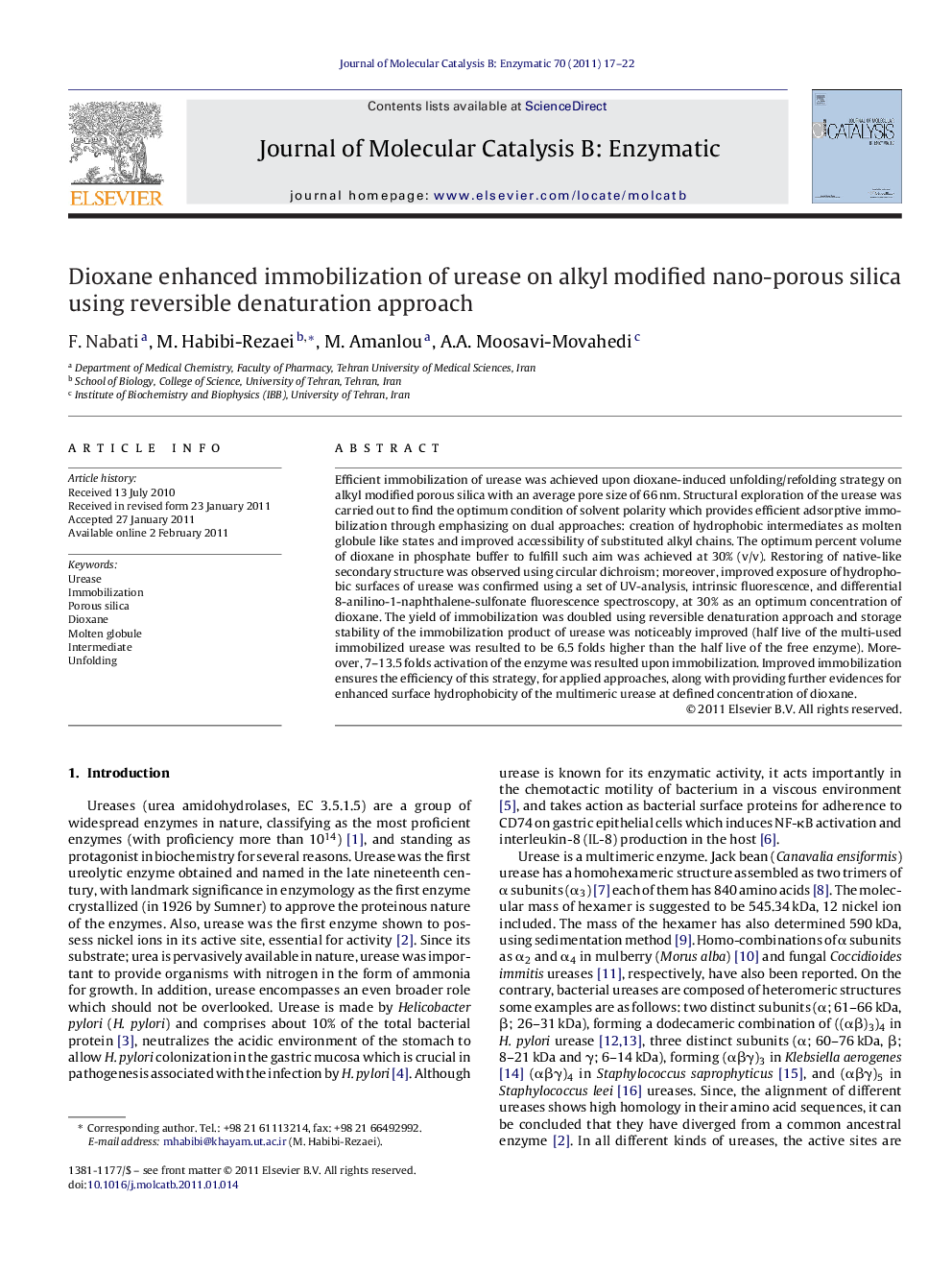| Article ID | Journal | Published Year | Pages | File Type |
|---|---|---|---|---|
| 70262 | Journal of Molecular Catalysis B: Enzymatic | 2011 | 6 Pages |
Efficient immobilization of urease was achieved upon dioxane-induced unfolding/refolding strategy on alkyl modified porous silica with an average pore size of 66 nm. Structural exploration of the urease was carried out to find the optimum condition of solvent polarity which provides efficient adsorptive immobilization through emphasizing on dual approaches: creation of hydrophobic intermediates as molten globule like states and improved accessibility of substituted alkyl chains. The optimum percent volume of dioxane in phosphate buffer to fulfill such aim was achieved at 30% (v/v). Restoring of native-like secondary structure was observed using circular dichroism; moreover, improved exposure of hydrophobic surfaces of urease was confirmed using a set of UV-analysis, intrinsic fluorescence, and differential 8-anilino-1-naphthalene-sulfonate fluorescence spectroscopy, at 30% as an optimum concentration of dioxane. The yield of immobilization was doubled using reversible denaturation approach and storage stability of the immobilization product of urease was noticeably improved (half live of the multi-used immobilized urease was resulted to be 6.5 folds higher than the half live of the free enzyme). Moreover, 7–13.5 folds activation of the enzyme was resulted upon immobilization. Improved immobilization ensures the efficiency of this strategy, for applied approaches, along with providing further evidences for enhanced surface hydrophobicity of the multimeric urease at defined concentration of dioxane.
Graphical abstractFigure optionsDownload full-size imageDownload as PowerPoint slideResearch highlights► Adsorptive interactions between hexameric urease and alkyl modified interfaces is low in polar medium. ► Urease is partially unfolded and substituted alkyl chains on silica are raised to expose at appropriate less polar medium. As a result, adsorptive immobilization is improved. ► Urease folding back process stabilizes immobilization product at polar medium.
